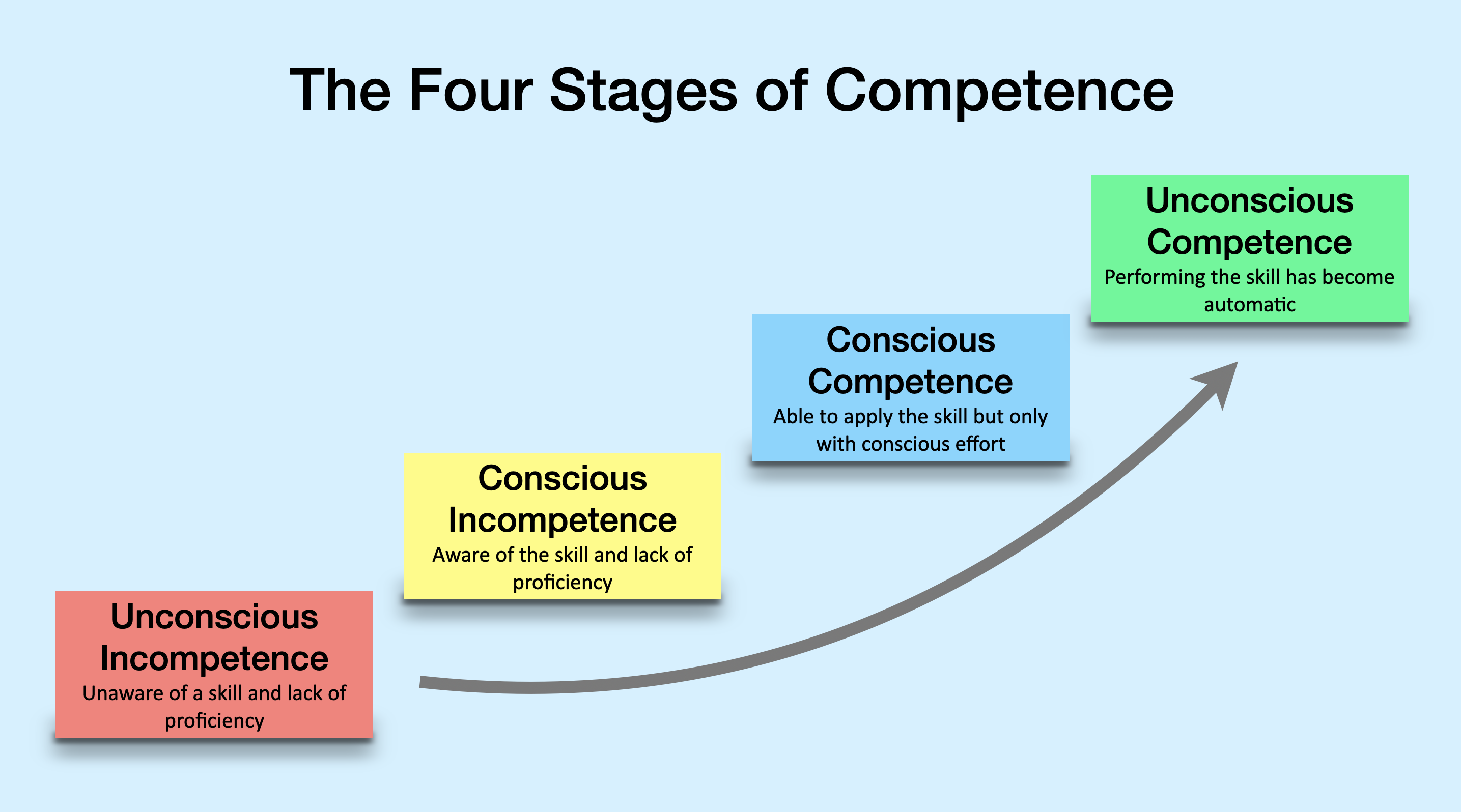There is a conceptual model of skill development that has been around for many years. Noel Burch generally is credited with having developed the model. Most of you will know it as the four stages of competence. It goes like this.
Stage One – Unconscious Incompetence
At this stage, an individual doesn’t understand or know how to do something but isn’t aware of the skill deficiency. Where a particular skill is concerned, the individual is Ignorant.
Stage Two – Conscious Incompetence
At this stage, the individual doesn’t understand or know how to do something but is conscious of the skill deficiency. The individual is Aware.
Stage Three – Conscious Competence
At this stage, the individual understands and knows at an elementary level of skill how to do something, but developing the new skill requires a great investment of concentration and effort. The individual is Learning.
Stage Four – Unconscious Competence
At this stage, the individual has repeated the skill so many times and has become so proficient that performing the skill has become “second nature.” It is performed automatically and requires no particular concentration. At this level, the individual exhibits Mastery.
Everyone reading this post has experienced the four stages of competence relative to something. For some, it may have been when you Continue reading



